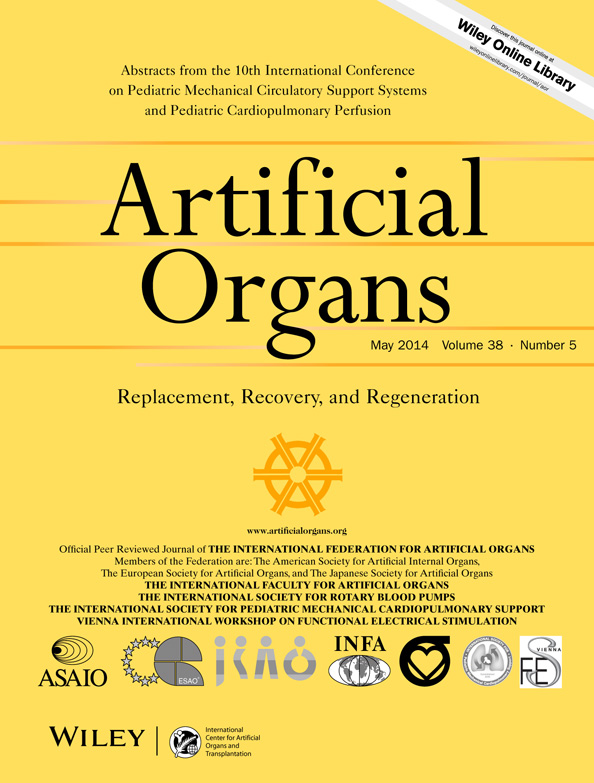Short-Term In Vivo Performance of the Cleveland Clinic PediPump Left Ventricular Assist Device
Abstract
The PediPump was implanted in six healthy lambs (mean 25.6 ± 1.4 kg) between the left ventricular apex and the descending aorta to evaluate in vivo performance for up to 30 days. Anticoagulation was achieved by continuous heparin infusion. Three animals were euthanized prematurely, two because of respiratory dysfunction and one because of deteriorating pump performance resulting from thrombus formation inside the pump. Three lambs were electively sacrificed 30 days after implantation; all had stable hemodynamics and minimal hemolysis, as indicated by low plasma free hemoglobin (2.5 ± 3.1 mg/dL). Mean 30-day pump flow was 1.8 ± 0.1 L/min at a pump speed of 12 200 ± 400 rpm. Neither activated clotting time nor activated partial thromboplastin time followed the changes in heparin dose. At necropsy, depositions were observed at the front (n = 1) and rear rotor axial positioning stops (n = 4); improved polishing techniques on the stationary stop surfaces and the addition of a hard-carbon, thin-film coating on the rotating stop of the pumps used for the last two experiments addressed the deposition seen earlier. In conclusion, the PediPump showed excellent hydraulic performance and minimal hemolysis during support for up to 30 days. Depositions observed at the axial positioning stops in earlier experiments were addressed by design and material refinements. We continue to focus on developing effective anticoagulation management in the lamb model as well as on further evaluating and demonstrating pump biocompatibility.




